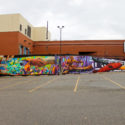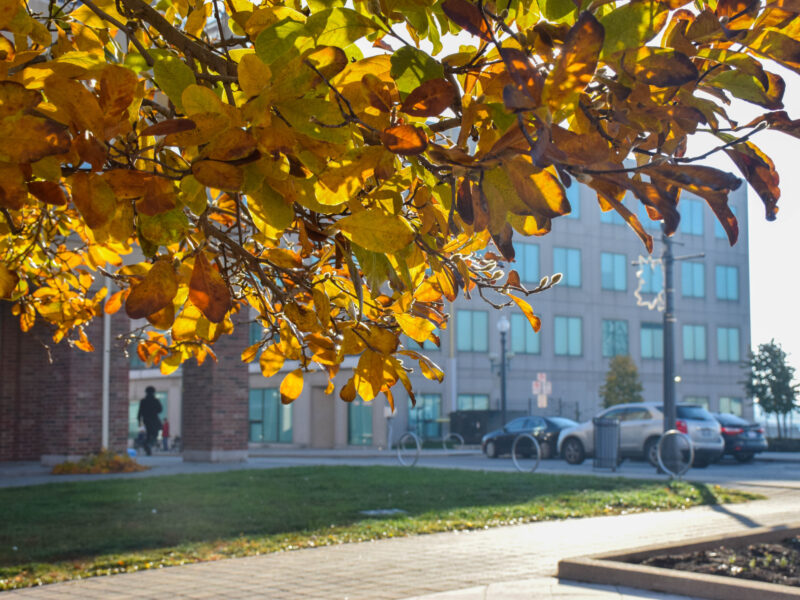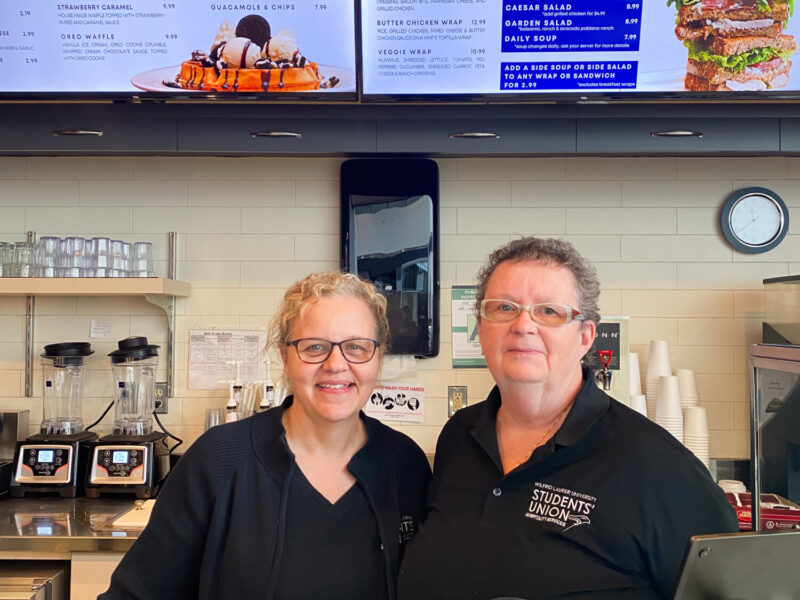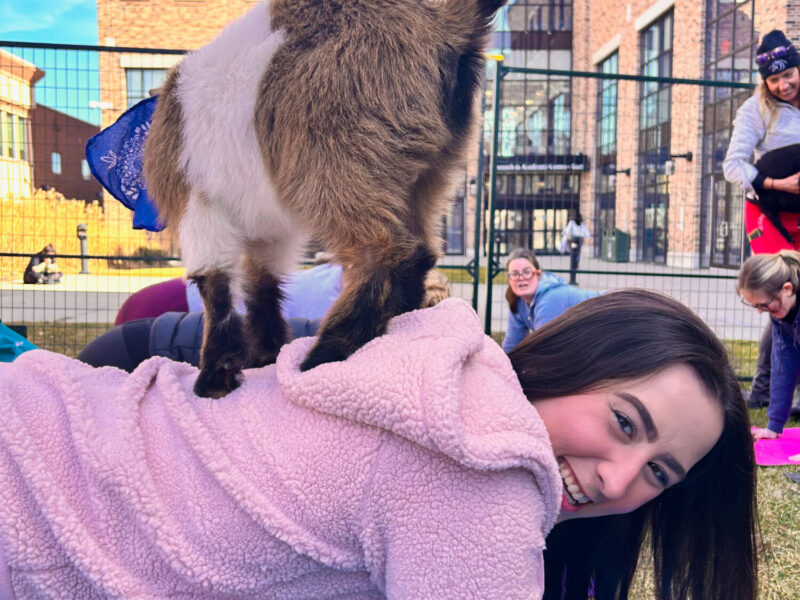The walls of the Market Square mall are looking more colourful with artistic murals covering them.
Groups of Indigenous and non-Indigenous youth took part in Laurier’s Transformation Action Graffiti (TAG) project. This initiative is a part of Laurier’s strategic plan to strengthen their relationship with the Indigenous community. The initiates show that Laurier is serious about the Truth and Reconciliation Act and is implementing certain recommendations within the act. The youth worked with Escuela Mapuche artists from Chile to create the mural.
The idea was proposed by Bonnie Whitlow, an aboriginal student support co-ordinator who met the artists while visiting Six Nations. After seeing the work created by the artists, she thought it would be a positive addition to Brantford. “I’ve always seen the disparity and divide between our two communities, and it always bothered me,” said Whitlow.
The workshops are attended by about 40 people from ages 14 to 24, and focus on allowing non-Indigenous students to better understand the history of the Indigenous community. The research is looking into the what the participants take away from the workshops, and evaluating the impact of perspectives, leadership and cultural pride.
“I proposed to Vanessa that could we use art to do a project with the youth,” said Whitlow. “Have native and non-native youth come together and talk about what’s important to them, what friendship actually looks like, what healing the relationship looks like. [To] have them tell us their story.”
Vanessa Oliver is a Youth and Children’s Studies Assistant Professor, and is the Lead Researcher and Project Coordinator in TAG project.
“Arts-based methods are an effective strategy for engaging our communities in imagining new possibilities that link individual and structural determinants of health to strengthen and heal the relationships between our communities. As a lasting work of art, the mural serves a reminder that we live, work and study on the lands of the Haudenosaunee people. Those of us who are not Indigenous have a responsibility to the lands and to the people of this territory. The mural helps us to remember that social justice is the work we all need to do to begin to address the historical and contemporary injustices brought to these lands by colonization,” Oliver said in an email.
Dr. Kari Brozowski is an associate professor of health studies and health administration at Laurier, and also a co-applicant and researcher in the program. During these workshops, she looks at generational influences within Indigenous culture.
The mural painting allowed the youth to work together. Youth attending the workshop worked with artists to create the mural.
Projects similar to the TAG help to repair the relationship between Indigenous and non-Indigenous peoples that have historically been weak. Although there are currently no future plans for murals to decorate the downtown, there are still many more workshops and much research to come.




